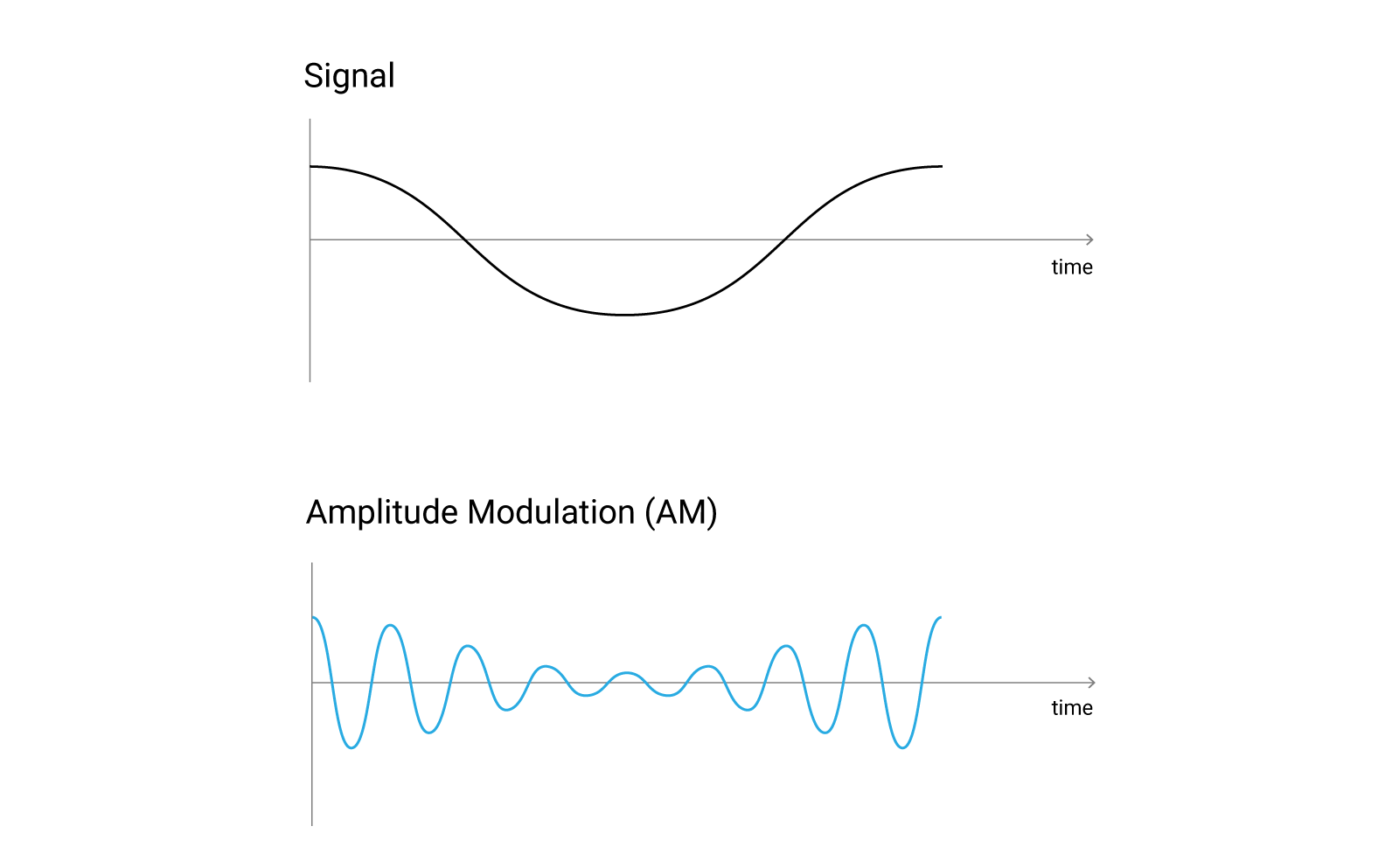How Does WiFi Speak? Understanding the Role of Modulation

Introduction to Modulation
Definition
Modulation is a fundamental concept in telecommunications that involves modifying properties of a carrier signal (such as its amplitude, frequency, or phase) to encode information. This information is often digital, in the form of binary sequences.
Purpose of Modulation
Think of modulation as a magical translator, turning the language of digital data into a format that can travel far and wide - over cables, through the air, even down a strand of optical fiber. It's the unsung hero of our modern, interconnected world, turning the 1s and 0s of our devices into signals that can voyage across oceans or even into outer space.
But that's not all! Modulation is a master of multitasking, allowing several signals to share the same pathway, each on its own unique frequency. This means that more data can be transmitted at once, without having to occupy more frequency range. So, you and millions of others can stream, download, and upload all at the same time - thanks to modulation.
Speed, you ask? Modulation got that covered too. With the clever use of different schemes, more information can be packed into each symbol, which allows for data to zip across the world at breakneck speeds. So next time your favorite movie loads in a blink or that hefty file download finishes in no time, remember you have the magic of modulation to thank!
Modulation Types
Amplitude Modulation (AM)
This is the simplest form of modulation where the strength (amplitude) of the carrier signal is varied in proportion to the waveform being sent.
Pros: AM is simple, inexpensive, and easy to implement. Cons: It's susceptible to noise interference and offers low data rates.

Frequency Modulation (FM)
Here, the frequency of the carrier signal is varied in accordance with the input signal.
Pros: FM provides better signal quality and is less susceptible to noise. Cons: It requires a larger frequency range than AM.

Phase Modulation (PM)
In PM, the phase of the carrier signal is changed according to the instantaneous amplitude of the modulating signal.
Pros: PM is robust to noise. Cons: It's more complex than AM and FM, leading to increased implementation cost.

Quadrature Amplitude Modulation (QAM)
QAM is a more complex form of modulation where both amplitude and phase of the carrier signal are changed.
Pros: QAM can carry more bits per symbol, leading to high data rates. Cons: It's more susceptible to noise, especially at high data rates.

Modulation in WiFi Technology
Basic Modulation Types
WiFi technology uses several modulation types, including Binary Phase Shift Keying (BPSK), Quadrature Phase Shift Keying (QPSK), and higher-order QAM. BPSK and QPSK are relatively simple, offering robustness at the expense of data rates. QAM, on the other hand, offers higher data rates but is more prone to noise.
Advanced Modulation Techniques
More advanced WiFi standards, such as 802.11n (WiFi 4), 802.11ac (WiFi 5), and 802.11ax (WiFi 6), employ more complex modulation schemes, such as 64-QAM, 256-QAM, and even 1024-QAM in WiFi 6. These schemes allow for higher data rates but demand better signal quality.
Understanding QAM in Simple Terms
In QAM, the WiFi signal changes both its phase (like turning around at different points while walking) and its amplitude (like changing the volume of your voice). These two changes happen at the same time, which is like singing a song while dancing; you're doing two things at once!
The number before QAM (like 64 in 64-QAM) tells you how many different combinations of amplitude and phase changes you can make. In our dance-and-sing analogy, a higher number would mean you have more dance steps and song notes to combine.

How Speed Depends on Modulation
Bits per Symbol and Data Rate
The choice of modulation directly impacts the WiFi speed because different modulations can transmit different amounts of data per symbol. The higher the number of bits per symbol, the higher the data rate. For instance, BPSK transmits 1 bit/symbol, QPSK transmits 2 bits/symbol, while 64-QAM can transmit 6 bits/symbol, and 256-QAM can transmit 8 bits/symbol.
Trade-Off with Signal Quality
While more complex modulation schemes can increase the data rate, they also require better signal quality to avoid errors. If the signal quality isn't sufficient, the WiFi system may need to switch to a less complex modulation, reducing the speed. So, while modulation directly impacts speed, this relationship is also influenced by other factors such as signal strength, noise, and interference.
Conclusion
Modulation techniques are fundamental to WiFi technology, impacting both its data rate and signal robustness. While the trend has been towards more complex modulations to achieve higher data rates, there's an inherent trade-off with signal quality and robustness. As a result, effective use of modulation requires careful consideration of both the capabilities of the hardware and the quality of the wireless environment.
Whether you're curious about modulation techniques or the intricacies of WiFi speeds, our team is here to answer your queries.
And that's not all. We can also introduce you to Linkyfi, an innovative platform that transforms your regular WiFi service into a powerful tool for business. Linkyfi goes beyond providing robust guest WiFi by integrating location-based services, allowing you to optimize your operations and engage your visitors in unique ways.
From understanding the backbone of WiFi to leveraging it for business growth, we've got you covered. Reach out to our team today and take the first step towards unlocking the full potential of WiFi technology!

